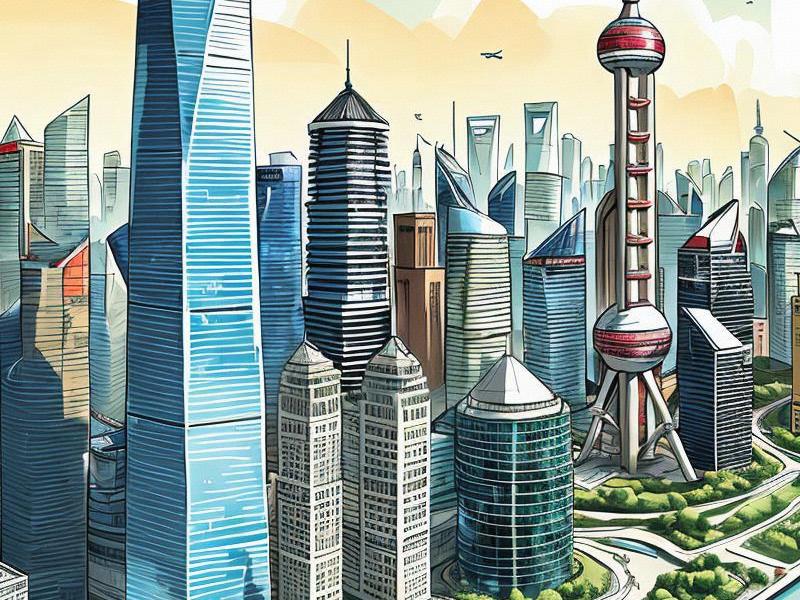This article delves into the remarkable journey of Shanghai as it continues to evolve from a historic port city into a global metropolis. It explores the city's modern architectural marvels, its resurgence as a cultural and artistic hub, and its ongoing transformation that reflects China's broader economic rise.

Shanghai, a city that has long been a symbol of China's rapid economic development, is undergoing a renaissance. Once known as the "Paris of the East," Shanghai has now emerged as a global financial hub, a cultural powerhouse, and a beacon of modern architecture. This article takes a closer look at the city's transformation, highlighting its architectural achievements, cultural revival, and the factors that have contributed to its global influence.
The architectural landscape of Shanghai is a testament to the city's dynamic evolution. The Bund, once a collection of colonial-era buildings, now stands as a showcase of Shanghai's past, with its historic skyscrapers overlooking the futuristic skyline of Pudong. The juxtaposition of these two districts is a visual representation of the city's transformation over the past century.
In Pudong, the Oriental Pearl Tower, the Jin Mao Tower, and the Shanghai World Financial Center stand as icons of modern architecture. These structures not only symbolize Shanghai's economic prowess but also reflect the city's ambition to become a global leader in innovation and design. The Lujiazui area, home to these landmarks, has become a magnet for international businesses and a hub for financial activities, further solidifying Shanghai's status as a global economic powerhouse.
Beyond its architectural wonders, Shanghai is also experiencing a cultural revival. The city has embraced its rich history while looking forward to the future. The Shanghai Museum, with its impressive collection of Chinese art, and the Power Station of Art, a former power plant turned contemporary art museum, are just a few examples of how the city is preserving its cultural heritage while fostering artistic innovation.
The Shanghai International Film Festival, one of the oldest and most prestigious film festivals in Asia, attracts filmmakers and audiences from around the world. This festival not only highlights the city's commitment to the arts but also serves as a platform for cultural exchange and collaboration. Similarly, the Shanghai Biennale has become a significant event in the global art scene, showcasing contemporary works from artists around the world.
上海贵族宝贝龙凤楼
Shanghai's cultural revival is also evident in its vibrant music and theater scenes. The city hosts numerous concerts, operas, and theater productions, attracting both domestic and international performers. The Shanghai Grand Theatre, a state-of-the-art venue, has become a centerpiece for cultural events, providing a space for the city's residents and visitors to experience the best of Chinese and international performing arts.
The factors contributing to Shanghai's transformation are multifaceted. The city's strategic location along the Yangtze River and its proximity to the East China Sea have made it a vital port and trade hub for centuries. In recent decades, Shanghai has leveraged its geographic advantages to attract foreign investment and foster economic growth.
The Chinese government's development policies have also played a crucial role in Shanghai's transformation. The establishment of the Shanghai Free-Trade Zone in 2013 has further enhanced the city's status as a global economic hub. This initiative has streamlined trade processes, reduced bureaucratic hurdles, and attracted a significant amount of foreign direct investment.
Shanghai's transformation is not without its challenges. The rapid urbanization process has led to issues such as traffic congestion, air pollution, and housing shortages. However, the city government has implemented various measures to address these challenges, including the expansion of public transportation networks, the promotion of green technologies, and the development of affordable housing projects.
上海水磨外卖工作室
One of the most significant challenges facing Shanghai is the need to balance economic growth with environmental sustainability. The city has taken steps to reduce its carbon footprint by investing in renewable energy sources, promoting energy-efficient buildings, and implementing waste management programs. These efforts are part of Shanghai's broader commitment to sustainable development and its aspiration to become a global leader in environmental stewardship.
Shanghai's transformation is also reflected in the lives of its residents. The city has become a melting pot of cultures, with people from all over China and the world living and working in the metropolis. This diversity has enriched the city's cultural fabric and contributed to its global appeal.
The rise of the middle class in Shanghai has also brought about significant changes in the city's lifestyle and consumer habits. The demand for high-quality goods and services has driven the growth of the retail and hospitality industries, while the city's residents have embraced new technologies and digital platforms to enhance their daily lives.
Shanghai's global influence extends beyond its economic and cultural achievements. The city has become a key player in international diplomacy and cooperation. As a member of the G20 and the Shanghai Cooperation Organization, Shanghai plays a vital role in shaping global policies and addressing pressing international issues.
上海夜生活论坛
The city's leadership in innovation and technology has also positioned it as a global leader in fields such as artificial intelligence, biotechnology, and green energy. Shanghai's research institutions and tech companies are at the forefront of these industries, driving advancements that have a global impact.
In conclusion, Shanghai's renaissance is a story of transformation, resilience, and ambition. The city has successfully navigated the challenges of rapid urbanization and economic development while preserving its cultural heritage and fostering innovation. As Shanghai continues to evolve, it remains a symbol of China's broader aspirations and a model for other cities around the world.
The journey of Shanghai is not just about the city itself but also about the aspirations of a nation. It is a testament to the potential of urban centers to drive economic growth, cultural revival, and global influence. As Shanghai looks to the future, it continues to inspire and captivate the world with its story of transformation and success.